BILLBOARD WATCH--The political debate over allowing new digital billboards in L.A. has little to do with issues like traffic safety, light pollution and energy use. In fact, it’s not even a debate in the classic sense but can be characterized as an interplay of two powerful desires. Clear Channel and other big billboard companies badly want to put up the electronic signs on city streets and freeways and the City Council desperately wants to find new sources of revenue. (Photo above: This Clear Channel digital billboard was shut off by court order in 2013.)
The stakes for the billboard companies are high. Digital billboards are big moneymakers, which means the companies are pulling out all the stops to sway the City Council in their favor. They’ve tacitly admitted that some of their existing billboards are blight by offering to remove them. They’ve promised free space both to city agencies and private organizations for public service messages. And most significantly, they’ve dangled the sweet-smelling carrot of revenue sharing in front of councilmembers’ noses.
The council, needing money to fix the city’s crumbling infrastructure and address it’s dire homelessness problem, is all ears. Or to be precise, those councilmembers who have never had angry calls from constituents about brightly-lit, constantly changing ads for fast food, movies, TV shows, and other commercial products and services hanging in the sky outside their windows 24 hours a day.
For those unfamiliar with the sometimes dreary history of billboard regulation in the city, Clear Channel and CBS Outdoor—now Outfront Media—converted 100 of their conventional billboards to digital before the City Council took heed of citizen complaints and called a halt in 2008 to further conversions. Four years later, the courts found that the city’s 2006 action allowing the conversions was blatantly illegal and ordered the signs shut off.
Faced with the loss of millions in revenue, Clear Channel cranked up a public relations and lobbying onslaught aimed at convincing city councilmembers to change course and allow the company to turn many of the digital billboards back on as well as put up new ones. Outfront joined that effort, along with the city’s third major billboard industry player, Lamar Advertising, which recently sued the city in an unsuccessful attempt for permits for 45 new digital billboards in West LA, Silver Lake, Eagle Rock, and the San Fernando Valley, among other areas.
The premises of this campaign were amply visible at a May 24 meeting of the City Council’s PLUM committee. Taking up citywide sign ordinance revisions that have been on the table in one form or another for seven years, the committee heard from a parade of billboard industry lobbyists and representatives of business, labor, and non-profit organizations all reading, sometimes literally, from the same script.
Digital billboards stimulate business activity, produce jobs, protect public safety, promote good causes, and offer a source of revenue for city programs and services. The five councilmen on the committee are educated and intelligent, and undoubtedly know that the first four claims are questionable at best, but the vision of money flowing into their districts without a dreaded debate over fee or tax increases is compelling. Furthermore, those aforementioned 100 digital billboards were clustered in only five of the 15 council districts, and guess what? None of the current members of the committee represented those districts, which means that their office phones never rung with constituent complaints about a billboard pouring out an endless loop of bright, eye-catching ads on their neighborhood streets.
But just how much money are we talking about? Tens of millions? Hundreds? Enough to fix the streets and sidewalks, build housing for the homeless, hire more police officers and firefighters?
To date, there hasn’t been any public discussion about the number of digital billboards that might be allowed, or what percentage of revenue from those billboards Clear Channel and others would be willing to share with the city. According to the city’s Chief Administrative Officer (CAO), the gross receipts, or business tax paid by billboard companies over the past three years ranged from $580,000 to $700,000. That works out to a gross annual revenue of $164 to $196 million per year.
Billboard companies are typically secretive about the amount of money they make from individual billboards, but figures from rate schedules available online as well as statements from company executives indicate that a digital billboard could generate at least six times the revenue of a conventional billboard of comparative size and location. A lot of money, in other words, but just how much the city might expect to get its hands on remains unknown, at least to the public.
Another question awaiting answer is how the city intends to permit new digital billboards or conversions of existing billboards, given that these are now prohibited. The City Planning Commission last year approved sign ordinance revisions allowing such billboards in a limited number of sign districts in high-intensity commercial areas such as downtown, Universal City, Warner Center and LAX, but PLUM committee members reacted to that restriction as if a dead skunk had landed on their desks, holding their collective noses, figuratively speaking.
One proposal floating about City Hall would allow companies to apply for conditional use permits to put up new digital billboards. For anyone new to City Hall nomenclature, that process is essentially as it sounds, where a proposed use is permitted by the city with conditions, on a one-by-one basis. In the case of a digital billboard, those conditions would ostensibly regulate location, size, height, brightness, rate of message change, and hours of operation.
Another possibility, repeatedly mentioned by Clear Channel lobbyists at public meetings, is for the city and billboard companies to enter into relocation agreements, as allowed by state law. How this would work in practice isn’t totally clear, although the ultimate objective would be to get a bunch of those digital billboards now dark or displaying static ad copy back into operation at new locations.
A third way has been proposed by City Councilman Paul Krekorian, who isn’t a PLUM committee member. His idea is to allow new digital billboards in exchange for revenue sharing and the takedown of existing billboards, but only on selected city-owned properties. The idea has generated some interest, although the billboard industry clearly doesn’t like the restriction, because lobbyists and their cohort of supporters in business and labor always speak in public meetings of the need to allow digital billboards on both public and private property.
At the May 24 PLUM committee meeting, there was also a brief discussion of the possibility of raising the gross receipts tax on billboard companies, and whether or not such a tax increase would have to be approved by voters. It wasn’t clear if that tax increase would be an alternative to allowing new digital billboards, or just another revenue source.
There is an elephant in the PLUM committee’s meeting room that members have been doing their best to ignore, although one did allude to it at the May 24 meeting. That is the legal jeopardy the city could be flirting with if it allows a significant number of new digital billboards outside those limited sign districts.
In 2002, the city approved a ban on new off-site signs, with exceptions for sign districts, specific plans and development agreements. The ink was hardly dry on the ordinance before legal challenges were filed in both state and federal court, and at one point the city was defending itself against more than a dozen lawsuits claiming that these exceptions rendered the ban unconstitutional.
After untold hours of labor by the City Attorney’s office, stacks of motions, and drawn-out hearings, the Ninth Circuit Court of Appeals had the final word, ruling that the exceptions didn’t render the sign ban unconstitutional as long as they could be shown to further the city’s interest in promoting traffic safety and improving aesthetics. But that ruling which struck joy in the hearts of those working to protect the visual environment from saturation by commercial advertising came with a caveat.
In a 2013 report to the PLUM committee, City Attorney Mike Feuer referred to a warning from that court that too many exceptions could render the off-site sign ban vulnerable to legal attack. Those exceptions, he wrote, could mean that the ban “would no longer adequately improve aesthetics and traffic safety and would thus be invalid under the First Amendment.”
Feuer pointed out that the sign ordinance revisions then being considered by the committee addressed this issue by limiting the number of sign districts and their locations to high-intensity commercial areas zoned regional center or regional commercial. That’s what the City Planning Commission affirmed last year, and what the PLUM committee summarily rejected when it took up the matter earlier this year.
The issue of allowing exceptions to the sign ban for the purpose of raising revenue was directly addressed in an earlier ruling by the appeals court in a case called Metrolights vs. City of Los Angeles. That lawsuit claimed that the city’s billboard ban was rendered invalid by the fact the city allowed thousands of exceptions in the form of ads in bus shelters, kiosks, and other items of street furniture.
The court ruled in favor of the city, saying that having a uniformly designed street furniture system could be shown to enhance traffic safety and aesthetics. However, the court warned that other purposes could undermine the off-site ban, specifically mentioning the raising of revenue, which “by itself perfectly legitimate state action, does not allow a state selectively to prohibit constitutionally protected conduct.”
Deputy City Attorney Michael Bostom also addressed the subject of getting revenue from digital billboards at a City Planning Commission meeting last year. Referring specifically to the proposed conditional use permit process, he said that while people tend to think of billboards as “a panacea for solving revenue problems in the city” the actual issue of generating revenue from signs is “highly complex.” He likened allowing new digital billboards in exchange for revenue to giving a developer permission to put up a building on private property only if the city was given one of the units in the building.
And at the last PLUM committee meeting on May 24, Councilman Felipe Fuentes alluded to a “privileged” communication to the committee from the city attorney’s office on May 16 about the “perilous ground” the city could be on through discretionary actions allowing new digital billboards. The four other members were presumably aware of this communication, although none commented on it.
Rewriting the sign ordinance was initiated by the PLUM committee in 2008. Of the current members, only Chairman Jose Huizar was on that committee, but he ought to remember that the major rationale was stopping the onslaught of legal challenges that were threatening to make the city wide open to new billboards, supergraphic signs, and other forms of outdoor advertising.
But that was obviously before the discussion was taken over by those who don’t see this advertising as something to be strictly limited and contained, but as a cash cow for the city.
Coming soon: LA’s Digital Billboard Debate, Part II: Sham Democracy
(Dennis Hathaway is the president of the Ban Billboard Blight Coalition and a CityWatch contributor. He can be reached at: [email protected].)
-cw







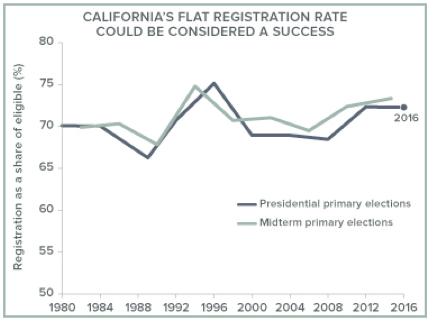




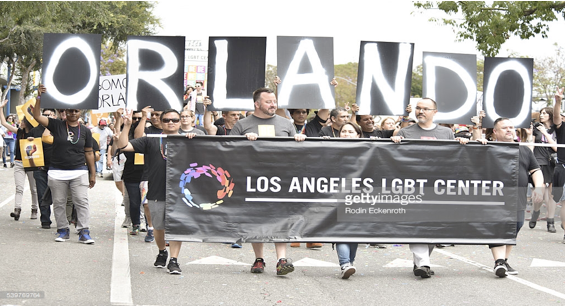



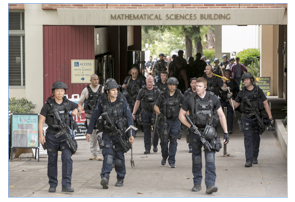 My own sense of vigilance was heightened during the time I served as department chair, especially when I would meet with irate and sometimes disturbed students. I would ask staff colleagues adjacent to me to pay special attention to any abrupt noises. I would also sit relatively close to the students and follow their hand movements in order to be able to act quickly if they took out a weapon.
My own sense of vigilance was heightened during the time I served as department chair, especially when I would meet with irate and sometimes disturbed students. I would ask staff colleagues adjacent to me to pay special attention to any abrupt noises. I would also sit relatively close to the students and follow their hand movements in order to be able to act quickly if they took out a weapon.
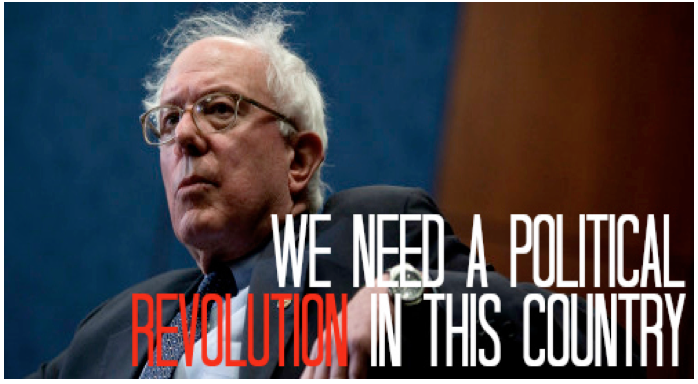
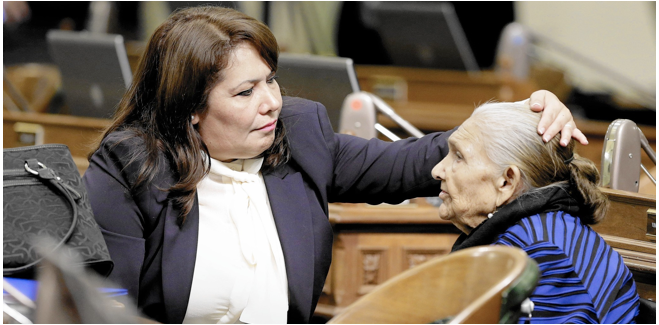

 As I read his letter of apology, I honor its painful honesty — “I failed to understand the amount of pain and frustration our participation in the 1033 program could cause in the community” — but at the same time I feel a stunned despair that such a decision was made in the first place. Indeed, the more I think about it, the more it rips my heart to shreds. Yes, yes, I understand that maintaining order in a big-city school system is an enormously difficult, complex undertaking. But, to reach out for tanks and grenade launchers?
As I read his letter of apology, I honor its painful honesty — “I failed to understand the amount of pain and frustration our participation in the 1033 program could cause in the community” — but at the same time I feel a stunned despair that such a decision was made in the first place. Indeed, the more I think about it, the more it rips my heart to shreds. Yes, yes, I understand that maintaining order in a big-city school system is an enormously difficult, complex undertaking. But, to reach out for tanks and grenade launchers?

















